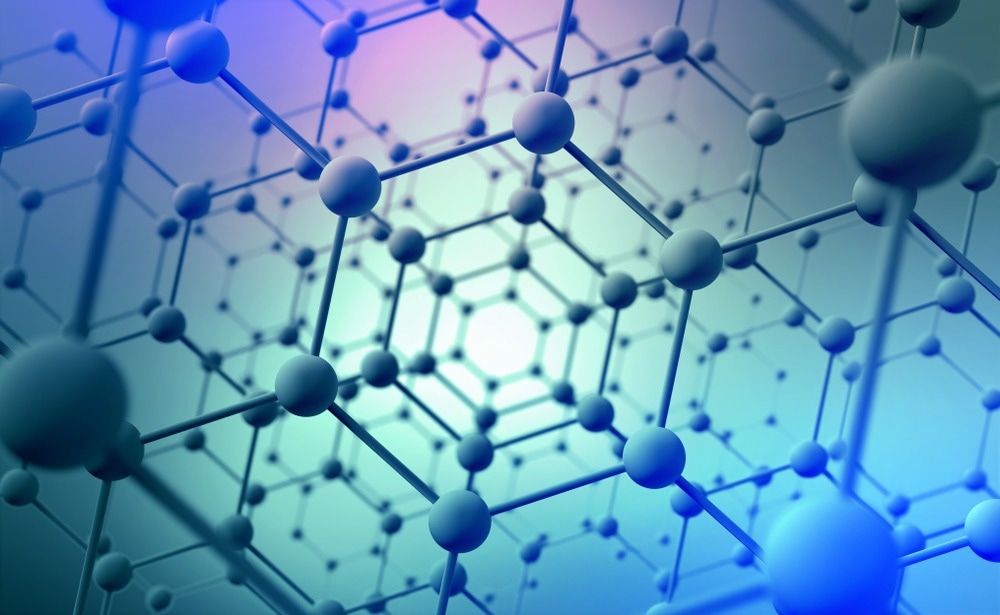In a recent study published in the journal Nano Letters, researchers from the University of Sharjah found that titanium and sulfur nanoribbons can undergo drastic changes in characteristics when compressed. These materials can carry electricity without losing energy.

Image Credit: Yurchanka Siarhei/Shutterstock.com
The authors made the finding as a result of their meticulous quest for novel materials capable of transmitting electricity without losing energy, a topic that has long fascinated scientists.
Our research focuses on one such promising material: TiS3 nanoribbons, which are tiny, ribbon-like structures made of titanium and sulfur. In their natural state, TiS3 nanoribbons act as insulators, meaning they do not conduct electricity well.
Mahmoud Rabie Abdel-Hafez, Associate Professor and Study Main Author, Department of Applied Physics and Astronomy, University of Sharjah
Abdel-Hafez added, “However, we discovered that by applying pressure to these nanoribbons, we could change their electrical properties dramatically.”
The researchers gradually applied pressure to TiS3. For the first time, scientists discovered that the TiS3 system experienced a sequence of transitions from insulators to metals and superconductors as the pressure was raised.
Although TiS3 materials are known to be effective insulators, scientists have only recently discovered their ability to operate as superconductors under pressure, opening the door to the creation of superconducting materials.
Superconductors are special because they can conduct electricity with zero energy loss, which is incredibly valuable for technological applications, but imagine a world where electrical power could be transmitted without any energy being wasted as heat. This would revolutionize how we use and distribute electricity, making everything from power grids to electronic devices far more efficient.
Mahmoud Rabie Abdel-Hafez, Associate Professor and Study Main Author, Department of Applied Physics and Astronomy, University of Sharjah
The authors describe this ability of TiS3 to transform into materials that produce no waste when transporting electricity as a breakthrough. They pinpointed the precise moments at which these materials transitioned between two states by carefully adjusting the pressure exerted on them.
Abdel-Hafez noted, “This is significant because understanding these transitions helps us learn how to manipulate other materials in similar ways, bringing us closer to discovering or designing new superconductors that can operate at higher temperatures and more practical conditions.”
This study shows that TiS3 can develop into these materials given the correct circumstances. The authors noticed that the materials under investigation changed from insulators or poor conductors to metals or good conductors and finally to superconductors or perfect conductors with no energy loss by progressively applying more pressure.
The discovery that TiS3 materials can turn into superconductors when put under pressure will help scientists understand the circumstances necessary for superconductivity. The authors argue that this understanding is essential for creating novel materials that may be superconductors at higher, more usable temperatures.
“This research not only enhances our understanding of superconductivity but also demonstrates the power of international collaboration in achieving groundbreaking scientific results, said Sweden’s Uppsala University Professor of Physics and Astronomy, a co-author.
The project offers fresh insights into how pressure can change the electrical properties of TiS3 nanoribbons. It is part of the University of Sharjah's scientific drive to produce materials that can transport electricity without energy loss.
The study is a collaborative effort involving scientists from China, Russia, and Sweden.
This advancement not only pushes the boundaries of material science but also holds the promise of groundbreaking applications in various fields, including energy transmission and electronic devices.
Mahmoud Rabie Abdel-Hafez, Associate Professor and Study Main Author, Department of Applied Physics and Astronomy, University of Sharjah
Regarding the approach taken to carry out the investigation, the researchers state that they followed “experimental and theoretical approaches to comprehensively explore the high-pressure behavior of the electronic properties of TiS3, a quasi-one-dimensional (Q1D) semiconductor, across various temperature ranges.”
“Through high-pressure electrical resistance and magnetic measurements at elevated pressures, we uncover a distinctive sequence of phase transitions within TiS3, encompassing a transformation from an insulating state at ambient pressure to the emergence of an incipient superconducting state above 70 GPa,” they added.
These materials can transmit electricity without any energy loss. Abdel-Hafez likened the hunt for new superconductors to “the search for the holy grail in materials science because these materials can conduct electricity without any energy loss. This is crucial as it could lead to incredibly efficient power transmission and numerous technological advancements.”
The scientists do point out that further study is necessary to fully comprehend the theories and mechanisms underlying these superconductors, which are still fiercely contested in the literature.
Abdel-Hafez said, “In our research paper on TiS3 materials, we found that we could change their electrical properties dramatically, these materials have the potential to revolutionize power transmission by enabling electricity to be conducted without any energy loss. Additionally, they could advance technologies in medical imaging, electronic devices, and transportation systems such as maglev trains.”
Regarding the ramifications of their findings, the authors are optimistic. They noted, “Our findings provide compelling evidence that superconductivity at low temperatures of ∼2.9 K is a fundamental characteristic of TiS3, shedding new light on the intriguing high-pressure electronic properties of TiS3.”
Journal Reference:
Abdel-Hafiez, A. M., et al. (2024) From Insulator to Superconductor: A Series of Pressure-Driven Transitions in Quasi-One-Dimensional TiS3 Nanoribbons. Nano Letters. doi.org/10.1021/acs.nanolett.4c00824